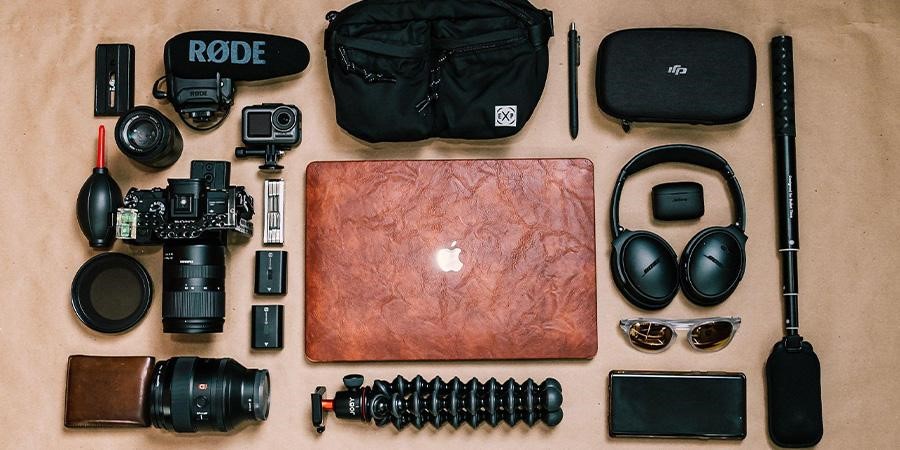Some people can’t seem to get enough of painting.
They paint their houses, their furniture, and even the walls inside their closets. And painting is not just for those with a creative bent. Some people do it because they want a change in color or texture; others are painting to cover up stains, marks, or other imperfections on the surfaces.
The need for painting your walls seems never-ending. And this is because painting is such an effective way of changing the look and feel of any given space.
But there’s more than one way to skin a cat – so to speak – when it comes to painting projects. Deciding on what type of paint you’ll be using should depend entirely on your painting goals.
But painting is a science, and it’s important to get the painting right for the best results. Here are factors to keep in mind when painting your walls.
1. Prepping the Room
Before painting, all walls should be properly prepared.
Ensure that the room you’re painting is clean and clutter-free. All windows should be closed to prevent paint from drifting in the breeze or being splattered on their surfaces — as this may lead to streaking.
You’ll also want to remove any electrical fixtures, like pendant lights and ceiling fans. You don’t want anything obscuring your painting efforts.
The temperature of the room must also be taken into consideration since it will affect the way your paint dries up. Paint usually dries faster when exposed to warmer temperatures but slower when exposed to cold temperatures.
Going back in time before painting can give us the reason why we need a primer coat. Primer acts as an adhesive for the base coat of paint, making painting easier and faster.
Also, painting walls that have already been painted is not a problem, especially if the surface has been primed before painting. If there are areas untouched by primer, you may end up painting a second time to cover these regions.
2. Choosing Paint Colors
People painting their rooms are faced with a wide array of color choices. Selecting the right wall painting colors for your room can be difficult — especially if you’re after painting that will last you a long time.
How do you know which colors will complement your furniture and which ones would clash so badly that they’d make you want to claw your eyes out? Be sure to browse different color palettes for inspiration on painting interior walls.
If you’re painting an entire room, don’t feel like you have to use the same paint color throughout the space. Consider implementing splashes and accents of different hues and complementary colors from the rest of the house.
You can use a couple of different painting techniques for this. Painting one wall in your chosen color, then painting the rest of the space with lighter, complementary interior paint colors, or painting the room in several shades of a single color.
3. Painting Surface
The kind of painting you will do must also come into consideration. There are four different painting techniques to choose from:
Painting on Metal: Painting on a surface that is made up of metal. It may destroy the surface when using conventional methods and materials. That’s why painting companies have developed paints for metal surfaces.
Textured Surfaces: Painting walls with textures requires special paint sprays and texture tools that allow painting in crevices and cracks between brick or stone masonry surfaces.
Wood: Painting wood can be done by scouring hardware stores for layers such as primer or wood brighteners.
Ceramic Tile: Painting ceramic tile also requires special painting sprays and tools since painting over them may result in peeling.
4. The Finish
The painting finish is one of the aspects that should be considered when painting your walls. There are two interior paint finishes:
Eggshell Finish
An eggshell painting surface usually has a satin or semi-gloss shine. It’s best to use it for painting in areas exposed only to mild humidity and moisture, like bathrooms or kitchens.
Eggshell painting surfaces dry quickly after painting, requiring multiple coats of paint for adequate coverage. In addition, it also offers very little resistance against dirt and stains. Because of these factors, an eggshell finish paint can last anywhere from 1–2 years, depending on the surface area being painted.
A popular choice for an eggshell finish painting surface is flat latex paint.
Low Luster (Matte Finish)
This painting finish is often paired with flat painting surfaces. It’s a painting surface that gives less shine than the eggshell finish. Thus, it’s ideal for painting in areas exposed to harsh conditions, such as bathroom and kitchen walls, floors, staircases, and even exterior walls.
Although this painting surface holds up well against moisture and dirt, it also requires a few coats of paint for good coverage. It may also take quite long to dry out – about 24 hours, depending on the weather.
A low luster painting surface usually lasts 3–5 years.
5. Professional Vs. DIY painting
When painting your walls, you have a choice between painting the walls yourself or hiring a professional painting service. For people who are new to painting, painting their own walls might be more feasible than painting with experts. On the other hand, hiring painting services can provide you with better quality paint that would last longer.
The bottom line is this: it all depends on what kind of painting finish and surface you want for your interior wall surfaces. If you’re after long-lasting paint results, then it may be best to let professionals do the work for you. They’ll know which paints and tools will result in desired effects without damaging your room’s surfaces.
It’s not necessary to be a painting expert to paint your walls. But if you want high-quality painting results, you don’t have any other choice but to let painting experts do the job.
Professionals can even help you with other services such as residential window tinting.
Painting Your Walls Made Simple
Painting your walls as part of home renovations can be very rewarding if you have the right painting tools and painting techniques to do the job. Once you get started, don’t forget that painting is a process — not an instant solution. So make sure that you take your time to avoid mistakes that will diminish or even ruin the result of your painting task.
For more interesting tips, check out our other posts.






More Stories
Timber Dining Tables | Why They Should Be Your Number 1 Choice
How to Use Microwave with Oven Functions for Quick and Easy Cooking
Jersey Shore condo to Beach Townhouse Update